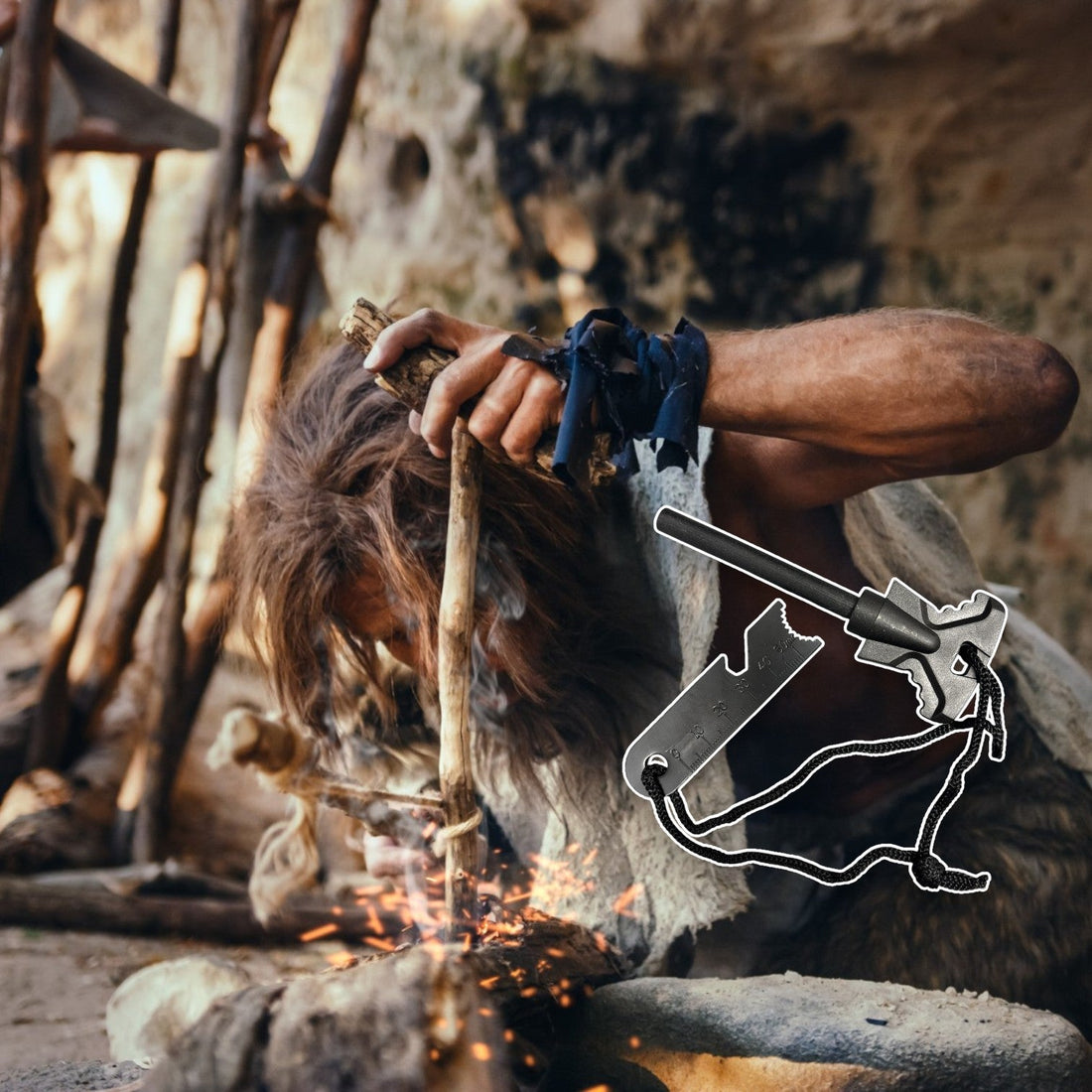
Step-by-Step Guide to Building a Campfire Like a Pro
Share
Building a campfire is essential for any camping enthusiast: it provides warmth, light, and an ideal cooking solution. Not only does it enhance the camping experience, but it also allows you to gather for convivial and relaxing moments under the stars. In this guide, we'll walk you through the key steps for building a campfire like a pro, safely and efficiently.
Understanding Fire Safety
Why fire safety is important
Before even considering a campfire, it's essential to understand fire safety. Campfires can ignite surrounding vegetation, especially in dry or windy conditions. Familiarize yourself with your local fire regulations; some areas have restrictions or bans due to fire hazards. Always check weather conditions and choose a location at least 3 meters away from tents, trees, and other flammable materials.
Tools and supplies needed
To make a successful fire, make sure you have the right tools on hand. Essential items include a means of lighting the fire, such as waterproof matches or a lighter, tinder (e.g., dry leaves, grass, or firelighters), kindling (small sticks), and larger logs for fuel. A shovel and a bucket of water should also be nearby to safely extinguish the fire once it's over.
Choosing the right location
Identify a safe place
The next step is to find a suitable location for your campfire. Choose a level area, away from overhanging branches or dry vegetation. If possible, use a pre-existing fire pit to minimize your impact on the environment. The fire pit or fireplace should be free of debris and ideally made of non-flammable materials for greater safety.
Create your home
If you don't have a fire pit, you can build one with stones. Gather dry stones and create a circular perimeter to contain your fire. This helps control the flames and prevent them from spreading. Make sure to leave enough openings for air circulation, which is essential for a healthy fire.
Gather your materials
What you will need
Light bulb: It ignites easily and burns quickly. You can use dry leaves, paper, or commercial firelighters.
Kindling: Small sticks or twigs that ignite with tinder and fuel the flames.
Firewood: Large logs that keep the fire going once established.
Collect firewood
Always choose dry wood; wet wood smokes and burns poorly. Look for fallen branches or logs; these are often the best sources of fuel. Prepare your equipment by breaking large logs into easy-to-handle pieces. Try to gather enough of each type of wood, avoiding over-collecting, especially tinder and kindling.
Building your fire structure
Popular fire structures
Different fire-building techniques produce varied results. Here are three of the most common:
Teepee Fire: Create a small circular base with tinder and surround it with kindling to form a top, leaving an opening for air and a spark.
Log Cabin Fire: Stack the wood like logs in a cabin, stacking upwards and placing tinder in the center. This structure allows for a long burn.
Lean-to fire: Plant a long piece of wood in the ground at an angle and press kindling into it to speed up the burn. This is especially useful in windy weather.
Light the fire
Once your structure is ready, light the tinder with matches or a lighter. Blow gently on it to ignite the kindling. As the fire grows, carefully add more kindling and larger logs. Be sure to leave spaces between the pieces of wood to promote air circulation and encourage the flames.
Maintaining Your Campfire
Feeding the fire
Once the fire is burning well, keep it going by regularly adding large pieces of wood. Keep an eye on the fire to prevent it from getting too big and keep it manageable. Use a stick to reposition the logs if necessary and never leave it unattended.
Put out your fire
Once the fire is over, it's crucial to extinguish it properly. Let the fire burn down to just embers, then gradually pour water over it to ensure all embers are extinguished. Stir the ashes to thoroughly extinguish the flames and douse any remaining hot spots with water. Leave your campsite as you found it, respecting the environment.
Conclusion
Learning how to build a campfire isn't just about keeping warm and cooking; it's a valuable outdoor skill that promotes togetherness. With practice, you'll not only become an expert fire-starter, but you'll also create lasting memories with your loved ones. Equip yourself with the right tools, like the 26-in-1 PREMIUM FIRE STARTER KIT, and enjoy your camping adventures with peace of mind.
Frequently Asked Questions (FAQ)
What should I do if my fire won't start?
If your fire is having trouble starting, make sure you have enough tinder and that it's dry. Check that the kindling isn't too large, as it may not ignite easily. Consider using a firelighter or looking for better tinder.
Can I use green wood to make a fire?
Green wood does not burn efficiently. For best results, always use seasoned, dry wood. If you only have access to green wood, wait until it dries for optimal combustion.
How to make a fire in wet weather?
In wet weather, choose dry materials, such as those under thick trees, and split wood to access the dry interior. Using a teepee structure can also help the heat effectively dry wet logs.
